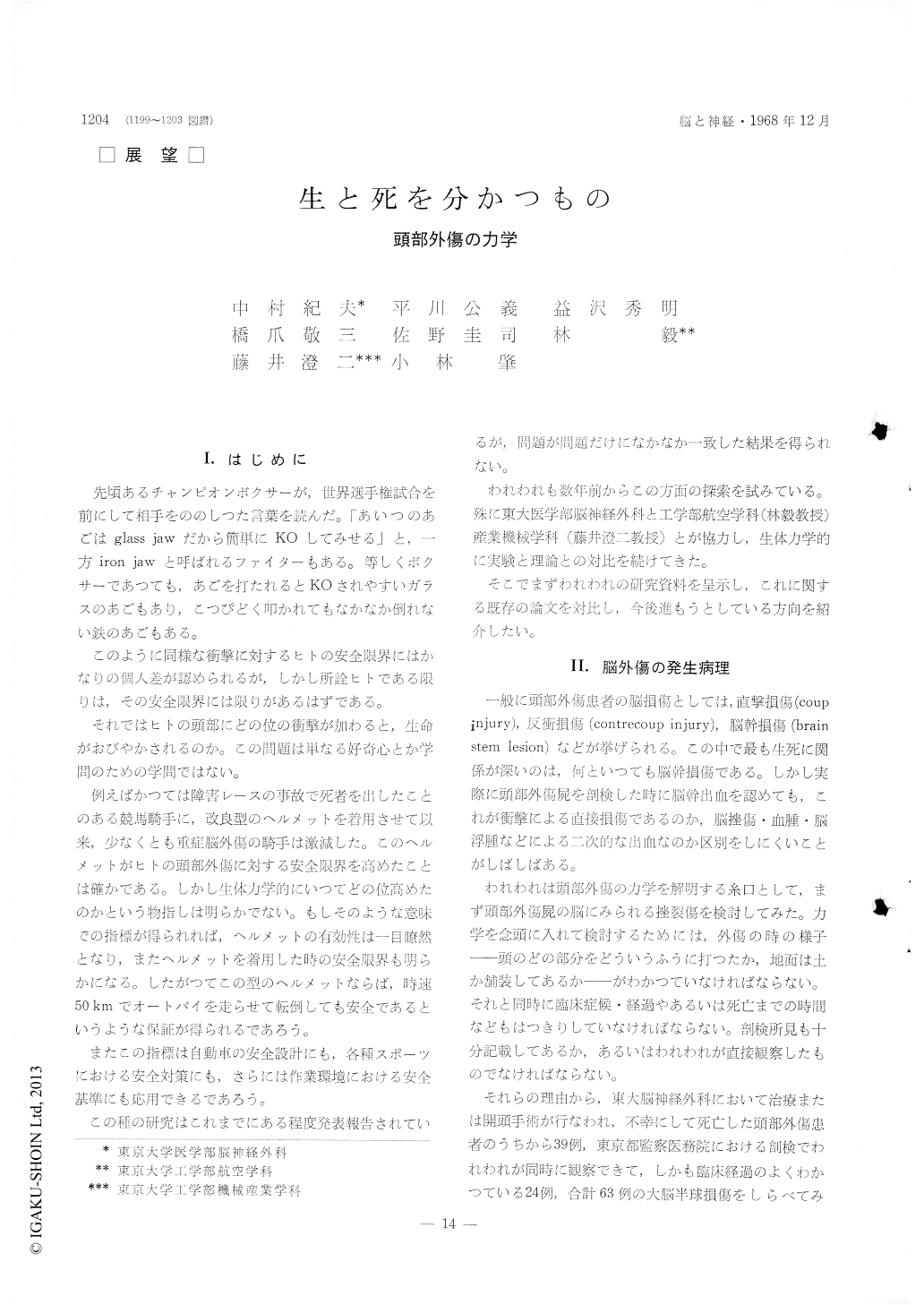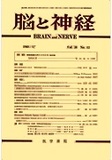Japanese
English
- 有料閲覧
- Abstract 文献概要
- 1ページ目 Look Inside
I.はじめに
先頃あるチャンピオンボクサーが,世界選手権試合を前にして相手をののしつた言葉を読んだ。「あいつのあごはglass jawだから簡単にKOしてみせる」と,一方iron jawと呼ばれるファイターもある。等しくボクサーであつても,あごを打たれるとKOされやすいガラスのあごもあり,こつぴどく叩がれてもなかなか倒れない鉄のあごもある。
このように同様な衝撃に対するヒトの安全限界にはかなりの個人差が認められるが,しかし所詮ヒトである限りは,その安全限界には限りがあるはずである。
A) In occipital impact, contrecoup injuries were seen in 90%, whereas, coup injuries were seen only in 17% in the authors series of autopsies. On the contrary, in frontal impact, coup injuries were found in 93%, whereas, contrecoup injuries were seen in 21%. In lateral blow, coup injuries were found in 50% and contrecoup injuries were seen in 60%.
B) These clinico-pathological data can be explain-ed by the theoretical analysis reported above, in which it is stated that the intracranial pressure gra-dients at the time of impact is linear in human cases and the point with pressure zero is shifted to the occipital pole from the midpoint in antero-posterior impact, this being probably due to the presence of the spinal canal.
C) The limit of tolerance to impact force was investigated in experimental falls using 10 Japanese monkeys. The limit of tolerance may be a little over 6 m. in height, around 40 km/hr in velocity, and about 180g in peak acceleration of the head when fallen onto earth.
Probably, in the human, these values may be a little smaller. In the above-mentioned experiments using a model simulated the human skull, cavitation may be produced by acceleration more than 130g. However, in the actual human head the existense of the spring constant, represented by skull-scalp cushion, can not be neglected so that the value may be a little larger. From these all, probably the limit of tolerance to impact force in the human may be around 150g.

Copyright © 1968, Igaku-Shoin Ltd. All rights reserved.


